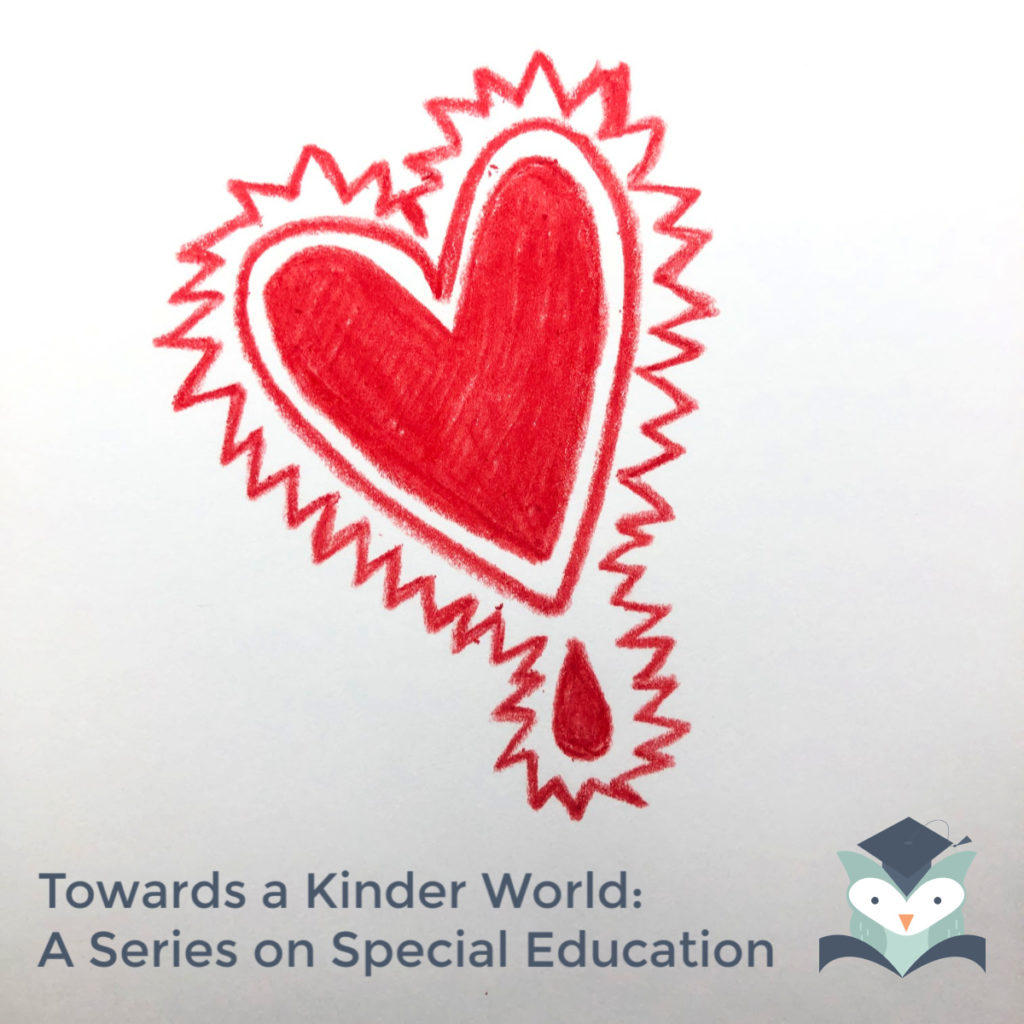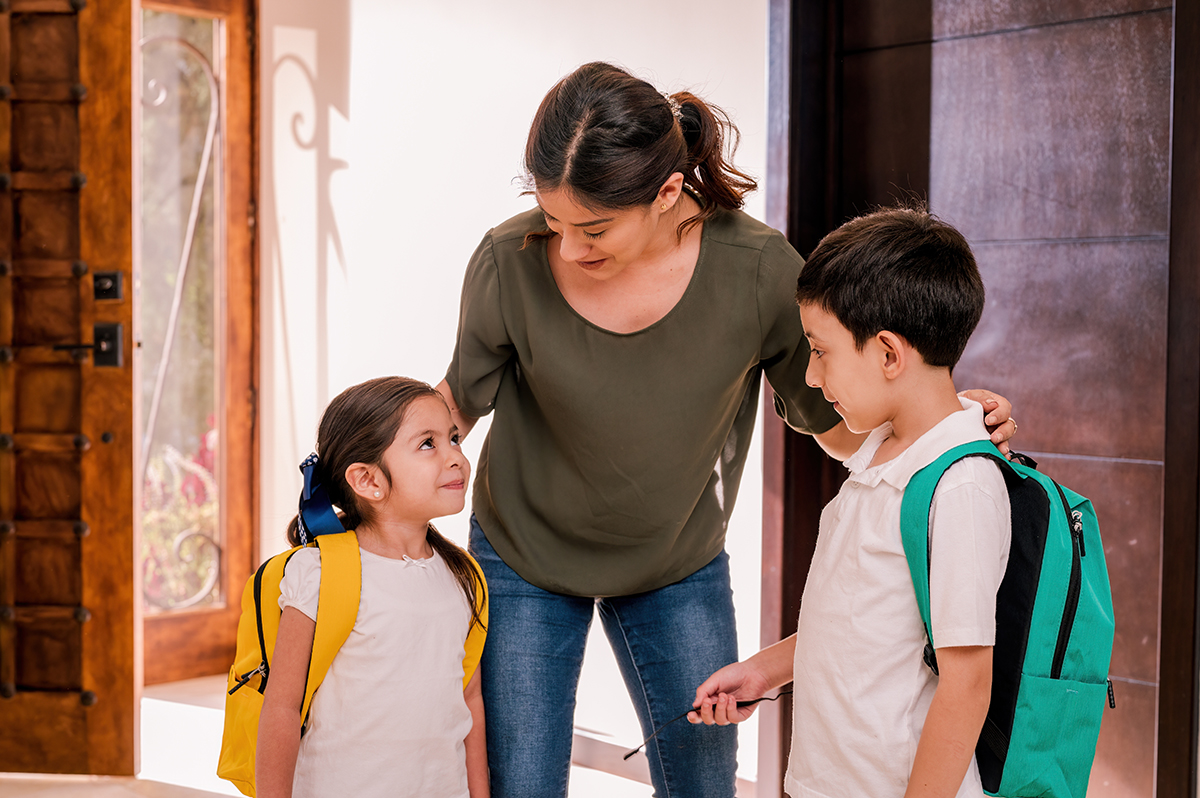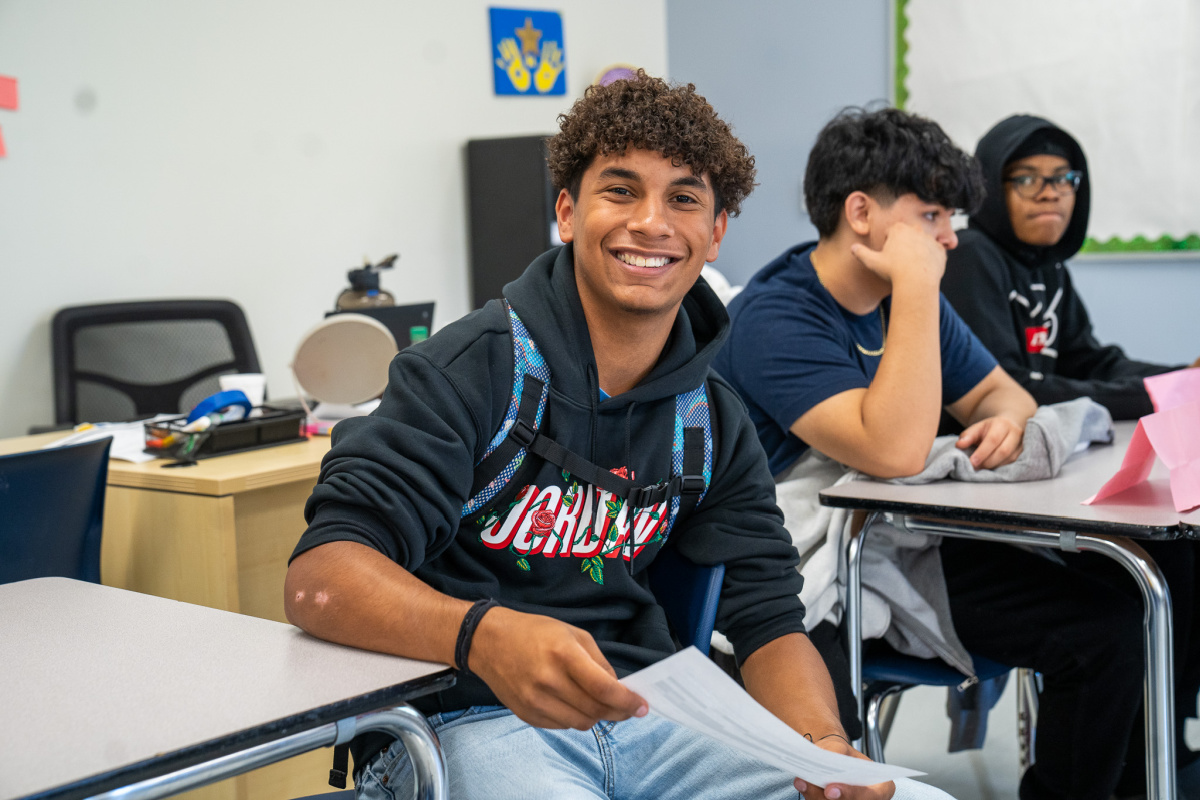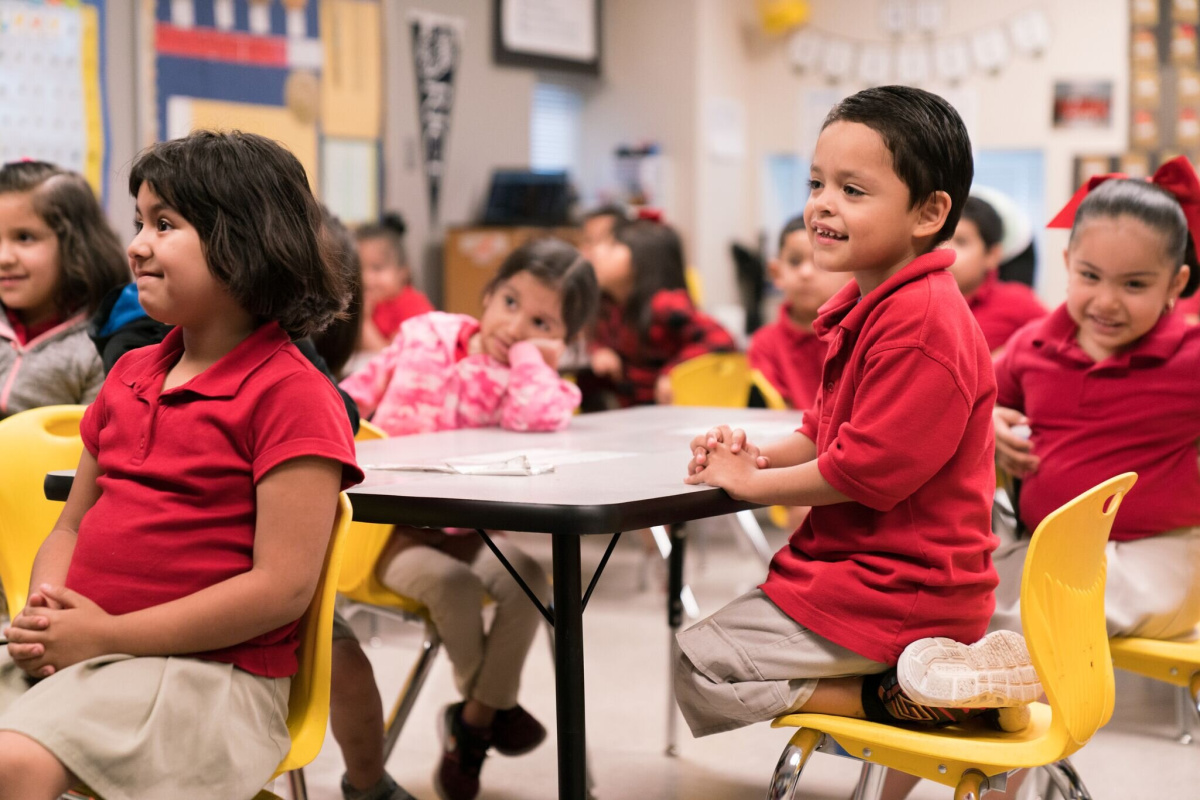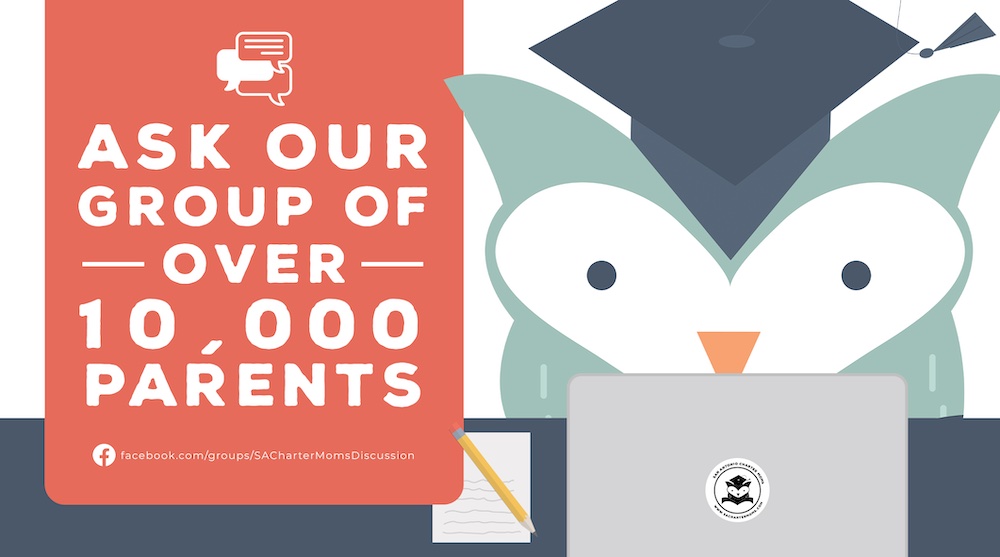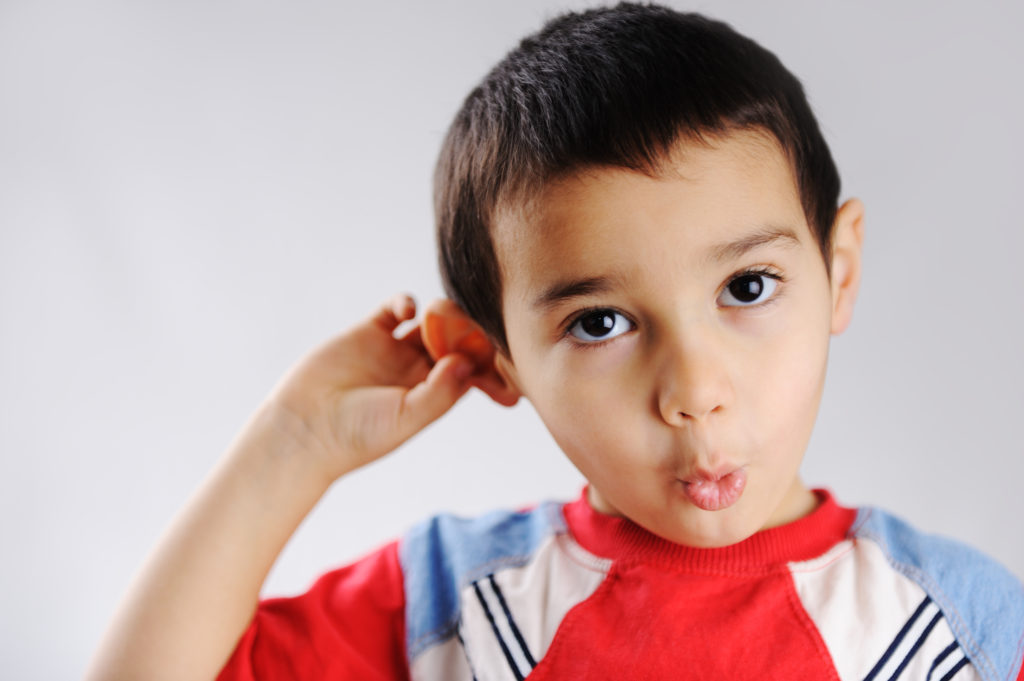
“These headphones aren’t working,” nine-year-old Jeremiah Ryan said to his mom, Sheila. They fished around for another pair. Those were “broken” too, he said. And so were his brother’s ear buds and his sister’s headphones.
After some back and forth, it became clear to Sheila that the headphones were working as they should, but sound was not clearly coming through to Jeremiah. Something was wrong. Jeremiah suffers from significant hearing loss in his right ear; he cannot hear low tones. It’s possible, the doctor told them, that this had been the case since birth, but in 2002 hearing screenings were not yet part of the regular postnatal routine.
Jeremiah hadn’t exhibited any of the early signs of hearing loss, such as delayed or unclear speech. As a baby he had startled and responded on cue. He wasn’t unusually “inattentive,” as some children appear to be when they cannot hear their parents or teachers.
“Since we homeschooled and I was his primary teacher and I have a higher pitched voice, he had no trouble hearing me,” Ryan said. “But the low tones he absolutely hears nothing of.” Because he could hear his mom/teacher, Jeremiah also didn’t exhibit another early sign of hearing loss: frustration in school. When children are struggling to hear, paying attention can be exhausting, and school becomes, as one can imagine, burdensome. If the child doesn’t know what’s happening—either because they’ve always heard less or because the loss has been gradual—they may not be able to explain why school is so infuriating.
But Jeremiah was frustrated with his headphones.
And that was how the Ryans’ journey began.
Getting a hearing aid proved tough. Single-sided deafness therapies were not covered by their insurance, and the device he needed was around $3,000, she said. Sunshine Cottage, which primarily educates students with profound hearing loss, referred her to Any Baby Can, which walked her through the process of applying for grants to get hearing aids. Jeremiah was fitted for a device, but doesn’t always need it; like his mom’s voice, his teachers’ voices at Great Hearts Monte Vista—where he’s now in high school—are at a pitch he can hear.
However, there are always concerns. Ryan said, “It seems like when you find a disability, there’s always something else going on.” Though initial examinations found nothing dangerous going on in her son’s brain, hearing loss can and does deteriorate. It opened Ryan’s eyes to the complexities of the human brain and just how much grace each of us requires as we live in a world of differences.
Hearing Loss in Texas Schools
Hearing loss affects over 7,000 Texas public school children, and unlike dyslexia, ADHD, and other learning differences that qualify for special education services in Texas, hearing loss can require more technical interventions: hearing aids, cochlear implants, and classroom systems to amplify teachers’ voices.
However, decisions on how to intervene—whether to try to recoup hearing, when to place the child in a deaf education program, and whether to use American Sign Language—are all personal decisions. Family and individuals relate to deafness and hearing loss in a variety of ways — some want to pursue procedures to restore what hearing they can, others want the tools and acceptance to thrive without it.
For some students, like Jeremiah, their hearing loss does not impede their learning. For others, said Shelly Bybee, deaf education consultant for the Texas Education Agency’s Education Service Center Region 20, more intervention is necessary. “Typically, hearing loss affects a child’s development of language and communication as well as accessibility to information in his/her environment,” Bybee wrote in an email. “The challenges for students who are deaf or hard of hearing vary as much as their individual needs do.”
The longer students go without getting the interventions they need, the more difficult it will be to help them. Because hearing has so much to do with human development, small children with hearing loss are not accessing the same information or developing the same neural pathways that hearing children do. Parents can adjust to how their child’s brain works, with or without cochlear implants and hearing aids, but experts say the sooner the better. That’s why newborn hearing screenings are now more common.
Bybee helps schools in San Antonio and the surrounding area connect to the national, state, and local resources to help their students who have hearing loss. Sometimes, she explained, classroom modifications are sufficient. If a student can sit close to the teacher, see their face while talking, and somehow reduce background noise, the student can attend school otherwise unimpeded.
In some cases, classrooms must be outfitted with amplifiers and other technology. In San Antonio, three Regional Day School Programs for the Deaf serve students from multiple districts inside elementary, middle, and high schools in Northside, North East, and San Antonio ISDs. Classrooms there have the technology, and teachers are trained in teaching students with hearing loss. Therapies and supports are available on site.
Luckily for Sarah Beaugh, when she found her dream house, it happened to be in the attendance zone of Oak Meadow Elementary, the Regional Day School Program for the Deaf in Northside ISD.
Her daughter, Naomi, suffered hearing loss when a virus attacked her cochlea. Overnight, the 3rd grader lost most of the hearing in her right ear and came down with severe, nauseating vertigo, Sarah said. They got her antibiotics, and eventually Naomi’s brain adjusted so the vertigo subsided. It took about a week, Beaugh said, but life went almost back to normal. Almost. In Naomi’s right ear, 60 percent hearing loss would be permanent.
It’s been amazing watching her daughter adapt, Beaugh said. She sees her make minor adjustments to position herself for better hearing in social situations. At school, her 504 plan states that she should sit close to the teacher. She benefits from the school’s amplification system, but doesn’t alway need it, Beaugh said.
“Thankfully it happened at an age where all her speech was developed,” she said. One of the primary challenges for children with hearing loss is speech development. If parents suspect hearing loss during the years when speech is developing, Bybee said, they can reach out to Early Childhood centers of the Early Education department of their local school district, depending on the age of the child.
A Little Help from Friends
Though things ended well, it was terrifying while it was all unfolding, Beaugh said, because they had no idea how such a change would impact their bright, introverted daughter. “We were kind of on pins and needles and watching her like hawks.”
She also had to deal with mom-guilt, she said, “As a parent you always feel like, how did I miss it?”
She is thankful that she knew Sheila Ryan from church. Ryan could reassure her that Naomi, like Jeremiah, would still be able to achieve the things she wanted to achieve and experience the things she wanted to experience. Both moms believed that God had a plan for their children, no matter their abilities.
Community is critical, according to the National Association of the Deaf, which encourages its members to reach out to one another, as well as to the families of those with hearing loss. When her journey with Jeremiah first began, Ryan hadn’t known exactly where to start, she said, but she found her way to Texas Hands and Voices, which offers families support to make whatever choices are best for their families. People with children who are deaf or suffer hearing loss can feel pressured to pursue medical intervention . . . or pressure not to. Some in the deaf community want to see more acceptance of deafness and American Sign Language in mass culture—they feel surgical interventions like cochlear implants erase a culture, not a disability. Texas Hands and Voices reassured Ryan that whatever choices awaited her in the future, there would be support, resources, and acceptance.
“I didn’t get to the point that I knew he was going to be okay until I talked to other people,” Ryan said. She had to search for people who would give her hope, so when Beaugh called, she remembered thinking, “This is the point where all my work has not been wasted.”
Teachers can also be part of that community of comfort.
“For school-aged children if the family suspects that accommodations are needed they may consider discussing concerns with the teacher to determine if there is a need for a referral to the student assistance committee or the 504 committee,” Bybee said.
Ryan has become an advocate, with her own children, and those in their sphere, for rallying around people who live and learn differently. Our unique siblings and neighbors —and to some degree, that’s all of us, she says—give us the opportunity to become kinder, more adaptable. It’s not on them to keep us from being inconvenienced. It’s on all of us to support one another for the challenges ahead, she said. “The kindness that we experience from the world gives us courage.”
Hearing Loss Resources for Families
- Sunshine Cottage
- Deaf Education at ESC Region 20—the Education Service Center for the region including San Antonio
- Deaf & Hard of Hearing Services Leadership Project at ESC Region 11—statewide hub
- Texas School for the Deaf
About the Author
Bekah McNeel is a San Antonio-based education writer who focuses on equity, innovation, and social-emotional learning for publications such as The 74. Over the years, we have republished local education coverage from her Hall Monitor site, and last November she wrote for us a four-part series, “Punished, Not Served,” about unfair discipline for students with disabilities.
Read More
- “Vision Therapy Might Be the Solution for Your Child’s Learning Disorder,” Bekah McNeel, San Antonio Charter Moms, July 8, 2020
- “One Mom’s Experience with a Dyslexia Simulator,” Bekah McNeel, San Antonio Charter Moms, June 24, 2020
- “Celebrate Dyslexia: Education, Identification, and Celebration of Dyslexic Students,” Bekah McNeel, San Antonio Charter Moms, June 10, 2020
- “What Special Education Parents Want to Keep From COVID-19,” Bekah McNeel, San Antonio Charter Moms, May 27, 2020

